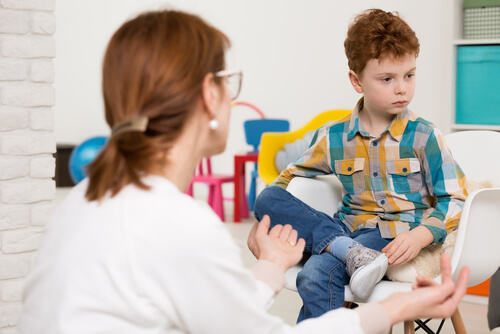Autism is a complex neurodevelopmental disorder of childhood. The etiology of this disease is not understood clearly. Furthermore, the diagnosis is primarily clinical & no traditional medicine is available for treatment. So, early diagnosis is of utmost importance for the prompt initiation of therapy.
Autism is now included in the disease spectrum of autism spectrum disorder(ASD) with other disorders like Asperger syndrome and pervasive developmental disorder not otherwise specified (PDD-NOS).
According to the world health organization, 1 in 100 children has autism. In the USA, 3% of children(1 in 36) are suffering from ASD. A more alarming fact is that it is increased by 241% since 2000. In India, around 1% of children below 10 years are suffering from ASD. Worldwide, boys are more affected than girls(4.3:1).
Autism or autism spectrum disorder has two neurological aspects-
- Persistent deficits in social communication & social interaction
- Restricted, repetitive patterns in behavior, interest, or activities.
A child with ASD may have fewer mild symptoms in each category(level 1 severity) to severe symptoms in both categories (level 3).
The average age of diagnosis of ASD in the UK or USA is around 3 years. It can be diagnosed at 18 months or at a younger age by an experienced clinician. Here, we discuss early signs of ASD that can be seen below 2 years of age.
DEFICITS IN SOCIAL COMMUNICATION & INTERACTION
We, humans, are social species. We start developing social communication & interaction skills as soon as we learn to sit. During the first 1-2 years we learn the basics of our mother tongue, nonverbal communication skills, verbal communication skills, gestures, etc. In autism, these skills do not develop(or develop poorly/ abnormally).
LANGUAGE
Delay in linguistic milestones( like, only babbling at15 months)
Not using >10 words at 2 years of age.
Regression or loss of speech.
Repeating the same word (echolalia)
Reduced use of verbal skills- using nonverbal ways like hand gestures to communicate.
NON-VERBAL COMMUNICATION
reduced or absent eye contact when you talk.

Does not smile back when you smile at him.
Reduce or inconsistent use of gestures- ex. waving bye-bye/ clapping.
Does not points his/her finger to the object he/ she desires. Instead, they use the hand of the parent to point at that thing or put the parent’s hand on the object.
RESPONDING & INTERACTING WITH OTHERS
Inconsistent response to name calling( mostly, no response).
Does not enjoy hugging/ cuddling initiated by caregivers/ parents. Only cuddles when he/ she wants.
Reduced or absent response to other peoples feeling/expressions.
Have no/reduced interest in playing with others( prefers to play alone).
Can be unusually aggressive or disruptive if playing with other kids.
does not like to pretend play.
does not like to play peek-boo.
does not enjoy sharing his/her toys.
JOINT ATTENTION
Here both baby and parent look at the same object and communicate with each other before and after looking at the object/event.

By one year of age, when a mother points towards an object, a child usually follows her lead to look at that object. Then the baby looks at his/her mother and both smile. This thing does not occur in autism
By 15 months of age, the child can point to the object of interest & ask his parent to follow. In ASD, they can not do that; Instead, they take their parent’s hand to point/put the parent’s hand over the object.
By 18 months of age, a child is able to point at the object or event of interest and can ask his/her parent to follow his/her lead. Here, the child wants to share his/her enjoyment. But in autism, the only reason the child wants the parent’s attention is to bring the object. They don’t like to share the object or enjoyment.
UNUSUAL BEHAVIOURAL PATTERNS/INTERESTS/ACTIVITIES
Intense interest in a specific toy.
Repetitive play- opens and closes the door repeatedly.
Abnormal movements- hand flapping/toe walking/ arching the back.
Playing with toys in unusual ways ( like spinning the wheel over and over, playing with an upside-down car, etc. )
Enjoying the same tv show episode.
Loves to wear the same dress.
Prefers the same food.
Loves the same routine.
Increased sensitivity to light/ sound/ food taste/ smell.
I
0 Comments